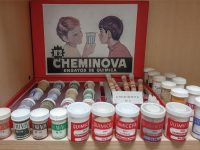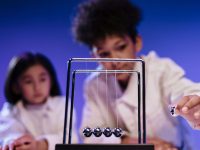Let science be told
A review of ideas for storytelling in science communication
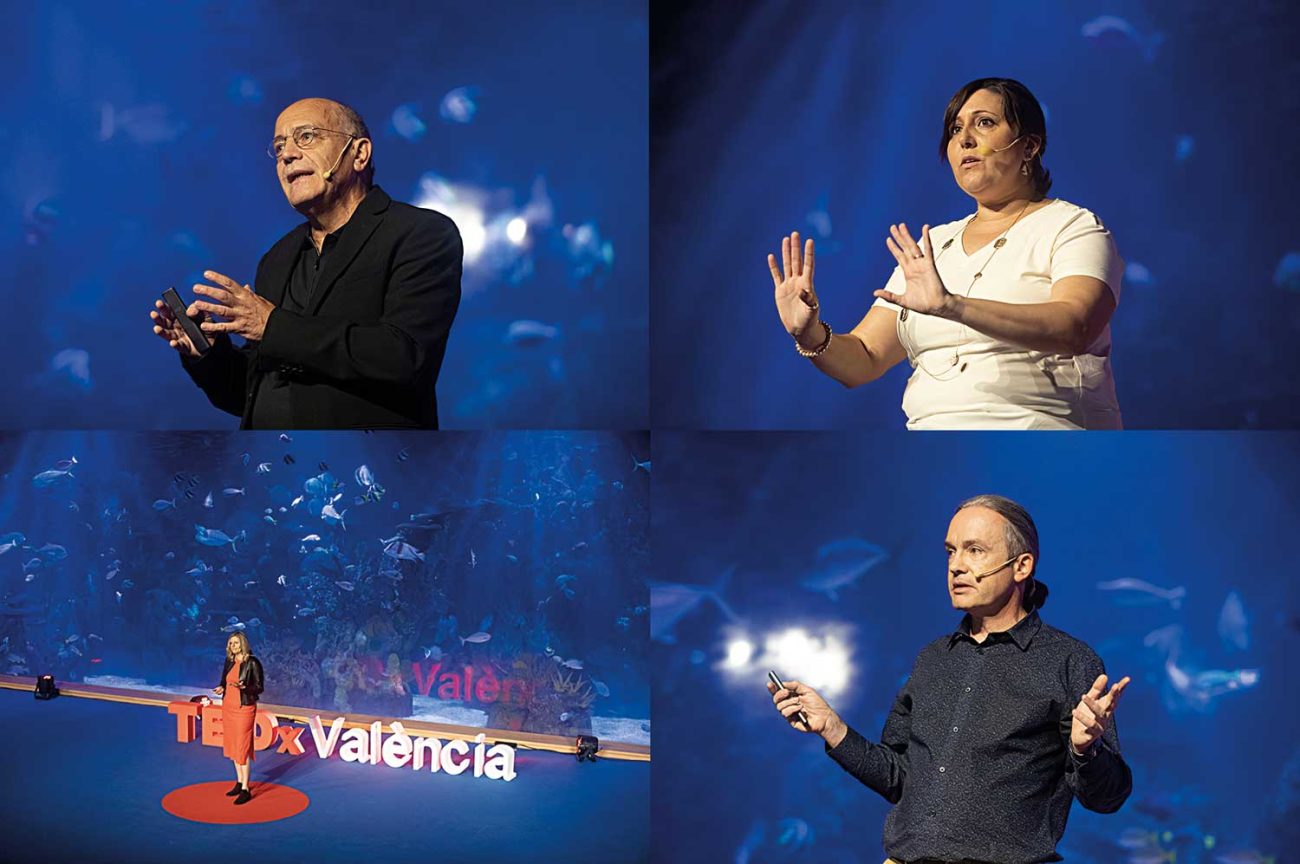
There is a rich literature on storytelling in public science communication, mostly advancing the premise that it helps in telling science to the public. We present here a summary of results from a review of ideas on the subject guided by a set of questions about goals, techniques, and research. We found no consensus on the notion of what is a story, yet some useful approximations emerged. There are various goals driving the use of storytelling to communicate science, from engaging to creating emotions to favouring understanding. The structure of the stories appeared as a crucial element, and three types of structures are dominant. As a field in evolution, there are not many empirical studies, but the few we found appear promising. We conclude that there is ample opportunity for discussion and research regarding emotions, persuasion, understanding and innovation in the use of narrative concepts and techniques to better let the science be told.
Keywords: storytelling, science communication, narrative, scientific journalism, emotion.
We have been un-taught
If we took Kevin Padian literally, Metode ought not to publish essays on storytelling in science. To Padian (2018) «scientific training un-teaches scientists how to tell stories, and pushes them into an unfamiliar format», one akin to a «perversion of narrative». Alas, science communication through storytelling has attracted authors from the social and the natural sciences, almost all singing the praises of this one idea: it will be better to communicate science as if telling a story around the campfire, the way it’s been done for millennia. It is a seemingly simple, attractive proposition, but on closer examination some levels of complexity emerge.
We report here on various ideas on the subject, published recently in the scientific literature. Our review is in a sense a story – the story of us chasing a few basic questions about storytelling with science: Is the goal to help understand, to engage, to persuade? What about the means: is it feasible to incorporate science content into classical fiction formats? Does it depend on the stated purpose?
Rather unexpectedly, the most primary question proved elusive: Do we even know what we mean by storytelling?
A definition that turns on itself
We embarked on the quest for a clear, generally agreed upon definition of storytelling. As launching pad we chose the special issue of the Journal of Science Communication (JCOM) devoted to Stories in science communication»1. From there we branched out until our final corpus, in trying to keep with the limits of this monographic issue, reached 17 papers with a variety of viewpoints.
The plan looked simple: find the overall definition of storytelling and report on its impact on public science communication. Slightly unexpected problem, though… the simple, almost universal definition of storytelling was not found. Purely simple definitions were readily available in JCOM’s special issue (see Figure 1). Martin et al. (2019) describe storytelling as «an ancient and powerful practice (…) From campfires and caves to printing presses and lecture theatres». To Finkler and León (2019), «classic storytelling typically involves a three-act structure with a beginning, a middle and an end», which is more a description than a definition. Enter Riedlinger et al. (2019):
we define storytelling as a narrative (or story) structure that usually focuses on two aspects: a sequence of events and the actions of one or more characters (…) Stories usually have an identifiable beginning, middle, and end, and involve some kind of conflict and resolution, or ‘cause-and-effect’ structure. (Riedlinger et al., 2019)
This ought to work… provided we define narrative and story. Cormick (2019) notes that narrative and stories «are a little different», but Brounéus et al. (2019) complicate the matter by warning that «no universal definition of “narrative” has been agreed upon by researchers». Cormick complements his observation with a hierarchical relation: «narratives are composed of multiple stories that relate to one another, while stories are a single “event unit”». ElShafie (2018) also sees a hierarchy… but with a twist – a 180° twist: to her, a narrative is «a sequence of events» which can set «a plot in motion», and when this happens «a narrative becomes part of a “story” (…) the more encompassing term». So a narrative is made of stories, and a story can contain a narrative? If this conundrum could be solved by numbers, then Halverson (2011) would help: «let’s [define] narrative simply as a “system of stories”», so that «narratives are composed of multiple stories that relate to one another».
You say tomatoe2 comes to mind, but the potential for confusion makes this more than just «semantics». Returning to Riedlinger et al. (2019), we have characters who do things and have things happen to them, to the point that problems/obstacles/conflicts accumulate up to a climax which requires solutions (or, at the very least, progress). Centuries of art have been produced from this… but surely there must be differences between a greek tragedy and a documentary on ecosystem breakdown.
One of our reviewers (to whom we shall remain anonymously grateful) set us on the path of yet more points of view, stemming from semiotics. One idea, deceivingly simple at first glance, came from narratology. After admitting that «narrative is notoriously difficult to define», Ribó (2019) decides nevertheless to have a go at it:
[…] we will define narrative as the semiotic representation of a sequence of events, meaningfully connected by time and cause […] which convey or stand for meanings that need to be decoded or interpreted by the receiver. (Ribó, 2019)
These last two words separate Ribó from Riedlinger in a profound way, because the introduction of «the receiver» cracks open the possibility of this whole process being much more complex than a one-way street. Indeed, Ribó proposes a semiotic model of narrative in which «the real people who participate in […] writing and reading (the real author and the real reader) [are distinct] from their textual or implied counterparts». There exist «an implied author» and «an implied reader», the latter being «the virtual persona to whom the implied author is addressing the narrative». Up to this point the process could very well be unidirectional. Alas, the model demands two levels of communication. At one level, the implied author sends «a message» to the implied reader by means of the «narrative discourse». The content of this narrative discourse is «a story», which establishes the second level of communication.
Ribó’s definition of narrative snuck the notion of meaning (also absent in Riedlinger’s), thus significantly increasing the level of complexity. When Ribó turns his attention to «perhaps the most crucial question any reader asks when dealing with a story: what does it mean?», he recognises that the meanings that authors give to what they write may very well differ from the meanings the readers give to what they read. Even though his model is depicted in a left-to-right line, there is now an interplay between the implied author and the implied reader which may have specific consequences when «the message» is not fictional prose but some sort of science to be communicated. We’ll explore this idea in the final section.
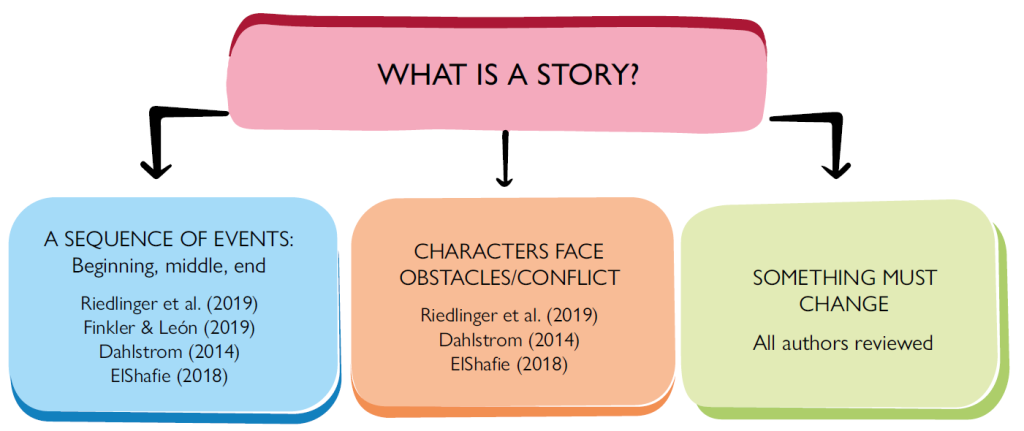
Figure 1. Some of the main components of a story based on the definitions cited in our review of the literature.
Independent from Ribó’s treatment, San Cornelio and Roig Telo (2022) conclude that storytelling cannot be viewed as less than bi-directional, at least in the multiverses of social media. Central to their analysis is the premise that storytelling is «a situated and contextualized narrative practice» mediated by such variables as place, moments and participants. This is crucial because it negates the notion of closed authorship, given that «in the context of social media, the content is as important as the conversation taking place, over time, in the form of comments, mentions, hashtags, ratings, threads, reinterpretations, locations, followers, and other possible intertextual manifestations». These observations make the prospect of transporting them to the realm of science communication incredibly enticing, yet one we cannot possibly explore within the confines of this essay.
A corpus built on questions
A very fortunate phrase attributed to the economist Paul Samuelson captures to a good extent the difficulties in communicating science (any and all of them) to the public: «Anecdotes do not constitute social science» (Quoteresearch, 2017). This admonition seems to have generated a very popular quote (“the plural of anecdote is not data”), used to our advantage by Dahlstrom (2014) to insinuate the need for storytelling in our field: «Although the plural of anecdote may not be data, the anecdote has a greater chance of reaching and engaging with a nonexpert audience». Joubert et al. (2019) establish the usefulness of storytelling from the very Editorial of JCOM’s special issue:
We now have ample evidence that storytelling can be a powerful way to nurture engagement with science (…) and that stories help people to understand, process and recall science-related information. (Joubert et al., 2019)
They also suggest that science communicators «need to go beyond presenting facts and evidence, towards creating emotional connections (…) Thinking of stories as facts wrapped in emotions may be the answer».
«Engaging», «helping to understand», or «creating emotional connections» are clearly purposes of science communication via storytelling (Figure 2). Whilst facing the methodological problem of constructing a corpus of publications in which to pursue our review, we figured that a road map might be at hand. Rather than a classical, thorough «literature review» (in which an extended database would have been built on the basis of search terms, precise selection criteria and a method to identify the state of the art), we opted for a «review of ideas». The limits for this essay would hardly have allowed for a comprehensive literature review.
Thus, our strategy was to detect prominent ideas by asking specific questions from our corpus: Are there definitions of story, storytelling or narrative? Is the aim to inform decisions? To arouse emotions? Provoke changes? Is the goal to induce understanding? Increase trust in science? Do they suggest how to do it, in practice?
Our corpus was built from two sources: JCOM’s special issue (and some of its references); and a further search in academic databases (Google Scholar, Redalyc, Scielo), with keywords such as storytelling, narrative and science communication (or slight variations thereof). This yielded 17 publications (in keeping with prescribed editorial guidelines), all of which we read thoroughly following the aforementioned set of questions (see Figure 2) and registering the instances in which we found references to them.
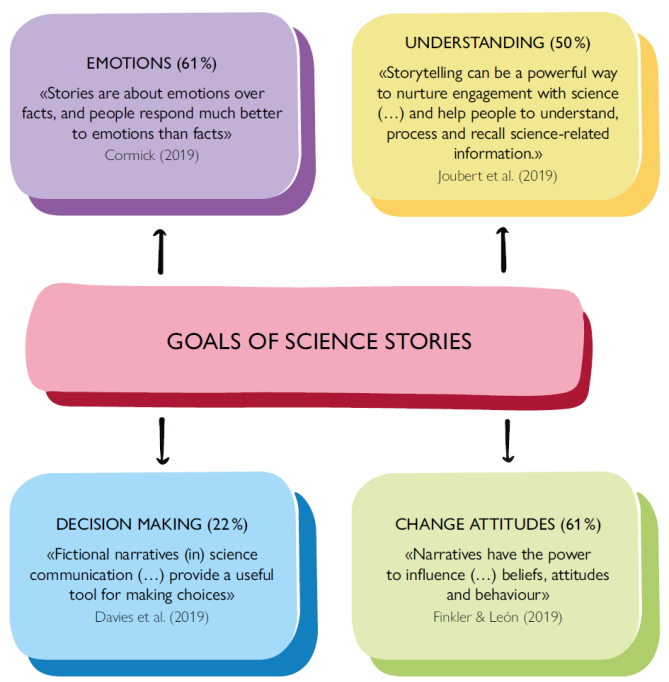
Figure 2. Main goals of science stories. In parenthesis, the percentage of articles explicitly stating each goal, along with a significant quote.
So, why and how is it done?
Informing decisions taken by the public was rarely an explicit aim of storytelling. For Davies et al. (2019) «fictional narratives for science communication (…) provide (…) a useful tool for making choices». Joubert et al. (2019) are more up-front: «people become empowered to make informed decisions».
One rather popular idea was that of persuasion. Dahlstrom (2014) states that «narratives are intrinsically persuasive» and Finkler and León (2019) advise that «narrative that is coupled with emotive imagery (…) is likely to increase the persuasiveness of the message». It is interesting to observe that persuasion is a slightly ambiguous word, potentially associated with convincing as well as with believing or even moving to act in a certain way (Onions et al., 1996). When Davies et al. (2019) write that «fiction [is attractive] to scientists looking (…) to persuade otherwise resistant audiences», do they mean convincing them with reasons, or nudging them towards certain behaviours? It was not always clear. Green et al. (2018) are perhaps more daring when suggesting that «narrative transportation – the ability of a story to mentally transport its listener into the storyteller’s world – supports the link between a strategically constructed story and its ability to persuade its listener».
Then things got really intense when we turned to emotions. Many authors subscribe to the view that information delivered with some sort of emotional load is more likely to be appreciated by the public. Martinez-Conde and Macknik (2017) think that «science breakthroughs that resonate with nonexperts despite lack of direct application do so because they engross our imagination and prompt emotion». And the optimal vehicle for such emotions is clear to Cormick (2019): «Stories are about emotions over facts, and people respond much better to emotions than facts».
The list of hurrahs for emotions goes on and on… but something happened when we hit Green et al. (2018) and their collection of experiences common to scientists: they have «witnessed firsthand the effects of global warming (…) felt the thrill of discovery (…) seen the perils of food insecurity (…) watched giddily as spawning corals release millions of tiny white eggs in a single night». They «bear witness to changes and discoveries that most people will never experience. Yet the training (…) does not focus on communicating these vivid experiences». This turned out to be an inflection point because the question of who is in charge of communicating science came to the fore and we realised most papers seemed to be thinking more about scientists wishing to explore their communication skills, than about professional science communicators. We thought this was relevant because the latter group would be somehow detached from the list of emotional experiences just described by Green and coauthors. Could there be at least one emotion to which these lot could have genuine access?
That one very special emotion
Turns out there might be, and it has to do with our last guiding question. Scientists may indeed witness firsthand, whilst the general public does not; scientists may have first claim to the thrill of discovery… but there is a dimension of discovery which every member of the public can make their own. It happens the moment when you suddenly make sense of something that up to then had seemed difficult, hostile, impenetrable. Then the eureka moment comes, and we propose that there is a eureka emotion associated with it. It is the very unique emotion of finally understanding (Crúz-Mena, 2016).
Not one paper we read made reference to understanding as an emotional affair, although there were hints. Joubert et al. (2019) did mention understanding as something that benefits from stories. One way to do it is through what Finkler and León (2019) call “sticky science ideas”, which «are needed to make the audience (…) understand». Indeed these authors are amongst the most intent on actually experimenting with the potential connections between the science content and the emotions elicited by presenting it through a carefully planned narrative structure. By stating that science communication must «always have predetermined and appropriate aims» and then recognizing that «narratives have the power to influence (…) beliefs, attitudes and behaviour» they are being crystal clear: their goal is to induce specific changes in their audience.
We’ll come back to their findings. For now, we underline the prevalence of the overall strategy – to slip «the science» into the very simple format hinted at in our first lines (i.e., protagonists facing obstacles/conflict) in order to provoke change through emotions associated with storytelling. This nutshell of a plan tended to appear in subtly varying forms throughout our review.
Can it be done… and how?
The crafting of stories
To paraphrase Samuelson, a string of anecdotes from the travails of scientists do not make a story fit to be told. In our review, it was all about structure. ElShafie (2018) starts with «five (useful) elements: protagonist, inciting incident, obstacle, stakes, and broad theme». The obstacle is crucial because, to her, «without an obstacle, the character does not change, and there is no story». Moreover, «an obstacle only moves a story forward if it puts something at risk (…) The stakes should increase as the story unfolds». If this was the story of scientists in a quest to create compelling stories, Padian’s observation would be an obstacle. Joubert’s answer (thinking of stories as facts wrapped in emotions) is more a posture than a practical solution. One approach would be to complete the structure: given ElShafie’s five useful elements, can one design the sequence of events around the obstacle? Figure 3 shows the most popular answers, in three narrative structures.
Up to here, most of what has been reported can be applied without much consideration to the science content. Moving forward, our focus turns to the nuances with which such content shapes the telling of stories. ElShafie offers a starting idea: «Every scientific investigation confronts an obstacle». Padian (2018) takes this idea much further: «When scientists do research, it can be thought of as a quest, and [funding] “transforms” our question into a “triumph” of an answer. That follows classic narrative structure».
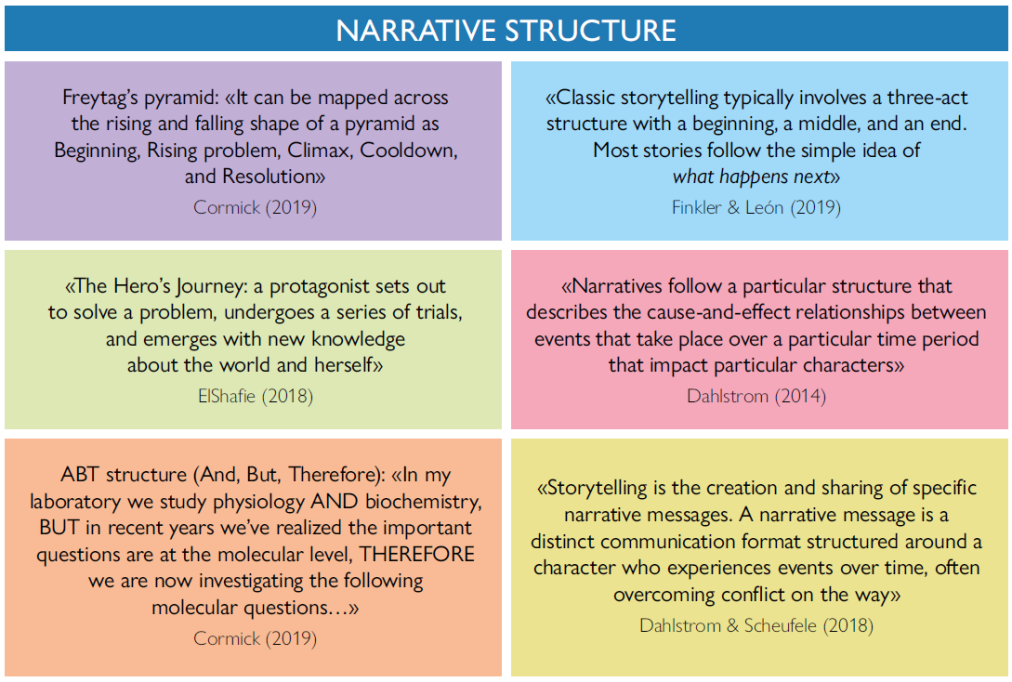
Figure 3. The three main narrative structures to communicate science, along with a significant quote.
These ideas go with the assumption that the goal is to tell the story of a «result» from science research. We may recall, though, that Finkler and León (2019) had a different goal. They «put forward a marketing-based science communication video format, the SciCommercial video (…) to communicate some of the science of whale watching (…) so that it alters (…) attitudes and behavioural intentions». In their video «the science content was successfully packaged in a form that communicates the key science idea while not being heavy-handed with the science».
New quests in the horizon
We may have failed to find a crystal clear definition of story in relation to narrative, and yet a picture emerged of how storytelling may contribute to communicating science to the general public. There are differing goals but seemingly convergent structures. It was encouraging to find, though, a tendency both to innovate with these and to test them empirically (Finkler & León, 2019), as well as other assumptions (Brounéus et al., 2019; Dahlstrom, 2010; Martin et al., 2019; Negrete and Lartigue, 2010).
Two ends were left loose, though. The first one has to do with understanding as a purpose for storytelling. Whilst the majority of authors discussed changes (in attitudes, behaviours, perceptions) or emotions, very few focused on the uses of storytelling to promote understanding of the science being communicated. Dahlstrom and Scheufele (2018) claim that «for science, narratives might have most of their power (…) in rebuilding the foundation of understanding scientific reasoning». Yet, they observe that «narrative messages may be counterproductive» because, «being an oversimplification» they fail in the goal of «engaging scientific reasoning». Surely these claims merit counterarguments because they matter, but the papers in our corpus appeared not to be overly concerned with understanding.3
Fortunately, the second loose end shone some light. Writing about narrative journalism, Vanoost (2013) presents two different functions in narrative: intriguing and configuring. The first follows the classical structure: a complication and the expectation of a resolution. In turn, «[the configuring function] aims at creating a retrospective understanding [through] causal relations (…) It usually dominates in factual narratives where the author wants to convey a reality (…) and make it understandable to others». Vanoost’s paper is not explicitly about science journalism, but there are traces in it: «Explaining, making sense of the events [is] the mission of the journalist», and thus «leaving elements unexplained may be the result of bad reporting». If these events are explainable through science, it must follow that a science reporter ought to report them right… quite possibly as stories.
Earlier in this essay, upon presenting Ribó’s semiotic model of narrative, we noted that the notion that there is meaning to the story is made more complex by the fact that the implied reader may give to it a different meaning than what the implied author had in mind. If «the message» is not a plot twist in a fictional story but a conclusion reached by a scientific investigation, then surely the meaning is given by the level of understanding of the arguments presented. It seems safe to expect professional science communicators to have reached a high level of understanding, so that their narrative skills can be applied to the creation of stories in which obstacles in the quest for conclusions can be overcome by scientific reasoning, in such a way that the arguments are understandable and the story is engaging. If so, several lines of research appear quite promising and fertile, looking for optimal uses of narrative resources to present crucial definitions of unfamiliar concepts, empirical evidence, uncertainty, explanations, even some of the mathematics involved.
Our closing thought is that not much is actually closed. The practice of empirically testing hypotheses involving storytelling, commonsensical yet not too frequent, is encouraging. Questions regarding emotions, persuasion and understanding remain intriguing.
As science journalists ourselves, and as academics, we look forward to more research on the potential of storytelling in our field, with emphasis on the role of rational thought – something journalism in general might benefit very much from.
Com a periodistes de ciència que som, i com acadèmiques, esperem que es continue investigant sobre el potencial de la narrativa en el nostre camp, posant l’accent en el paper del pensament racional, una cosa de la qual el periodisme en general podria beneficiar-se molt.
Notes al peu
1. JCOM 18(5), 2019. This special issue drew «from storytelling as the core theme of the 2018 conference of the Public Communication of Science and Technology (PCST) Network» (https://www.pcst.network/conferences/past-conferences/pcst-2018/). Go back.
2. From the Gershwin brothers classic Let’s call the whole thing off. Go back.
3. To be fair, the literature on science education does appear to be very concerned, but our review did not focus on that field. Go back.
References
Brounéus, F., Lindholm, M., & Bohlin, G. (2019). Telling it straight – a focus group study on narratives affecting public confidence in science. JCOM: Journal of Science Communication, 18(05), A03. https://doi.org/10.22323/2.18050203
Cormick, C. (2019). Who doesn’t love a good story? – What neuroscience tells about how we respond to narratives. JCOM: Journal of Science Communication, 18(05), Y01. https://doi.org/10.22323/2.18050401
Crúz-Mena, J. (2016). El placer de ser contagioso. In D. Golombek & J. Nepote (Coords.), Instrucciones para contagiar la ciencia (p. 105–111). Editorial Universidad de Guadalajara.
Dahlstrom, M. F. (2010). The role of causality in information acceptance in narratives: An example from science communication. Communication Research, 37(6), 857–875. https://doi.org/10.1177/0093650210362683
Dahlstrom, M. F. (2014). Using narratives and storytelling to communicate science with nonexpert audiences. Proceedings of the National Academy of Sciences of the United States of America, 111(supplement_4), 13614–13620. https://doi.org/10.1073/pnas.1320645111
Dahlstrom, M. F., & Scheufele, D. A. (2018). (Escaping) the paradox of scientific storytelling. PLOS Biology, 16(10), e2006720. https://doi.org/10.1371/journal.pbio.2006720
Davies, S. R., Halpern, M., Horst, M., Kirby, D., & Lewenstein, B. (2019). Science stories as culture: Experience, identity, narrative and emotion in public communication of science. JCOM: Journal of Science Communication, 18(05), A01. https://doi.org/10.22323/2.18050201
ElShafie, S. J. (2018). Making science meaningful for broad audiences through stories. Integrative and Comparative Biology, 58(6), 1213–1223. https://doi.org/10.1093/icb/icy103
Finkler, W., & Leon, B. (2019). The power of storytelling and video: A visual rhetoric for science communication. JCOM: Journal of Science Communication, 18(05), A02. https://doi.org/10.22323/2.18050202
Green, S., Grorud-Colvert, K., & Mannix, H. (2018). Uniting science and stories: Perspectives on the value of storytelling for communicating science. FACETS, 3(1), 164–173. https://doi.org/10.1139/facets-2016-0079
Halverson, J. R. (2011, 8 de desembre). Why story is not narrative. Center for Strategic Communication. Arizona State University. https://csc.asu.edu/2011/12/08/why-story-is-not-narrative/
Joubert, M., Davis, L., & Metcalfe, J. (2019). Storytelling: The soul of science communication. JCOM: Journal of Science Communication, 18(05), E. https://doi.org/10.22323/2.18050501
Martin, K., Davis, L., & Sandretto, S. (2019). Students as storytellers: Mobile-filmmaking to improve student engagement in school science. JCOM: Journal of Science Communication, 18(05), A04. https://doi.org/10.22323/2.18050204
Martinez-Conde, S., & Macknik, S. L. (2017). Finding the plot in science storytelling in hopes of enhancing science communication. Proceedings of the National Academy of Sciences of the United States of America, 114(31), 8127–8129. https://doi.org/10.1073/pnas.1711790114
Negrete, A., & Lartigue, C. (2010). The science of telling stories: Evaluating science communication via narratives (RIRC method). Journal of Media and Communication Studies, 2(4), 98–110. https://doi.org/10.5897/jmcs.9000080
Onions, C. T., Friedrichsen, G. W. S., & Burchfield, R. W. (1996). The Oxford dictionary of English etymology. Oxford University Press.
Padian, K. (2018). Narrative and “anti-narrative” in science: How scientists tell stories, and don’t. Integrative and Comparative Biology, 58(6), 1224–1234. https://doi.org/10.1093/icb/icy038
Quoteresearch, A. (2017, 27 de desembre). The plural of anecdote is not data – Quote investigator®. https://quoteinvestigator.com/2017/12/27/plural/#f+17637+1+2
Ribó, I. (2019). Prose fiction an introduction to the semiotics of narrative. Open Book Publishers. https://doi.org/10.11647/OBP.0187
Riedlinger, M., Massarani, L., Joubert, M., Baram-Tsabari, A., Entradas, M., & Metcalfe, J. (2019). Telling stories in science communication: Case studies of scholar-practitioner collaboration. JCOM: Journal of Science Communication, 18(05), N01. https://doi.org/10.22323/2.18050801
San Cornelio, G., & Roig Telo, A. (2022). Storytelling, social media and life stories. BiD: Textos Universitaris de Biblioteconomia i Documentació, 48. https://doi.org/10.1344/bid2022.48.14
Vanoost, M. (2013). Defining narrative journalism through the concept of plot. Diegesis, 2(2), 77–97 https://www.diegesis.uni-wuppertal.de/index.php/diegesis/article/view/135/178



